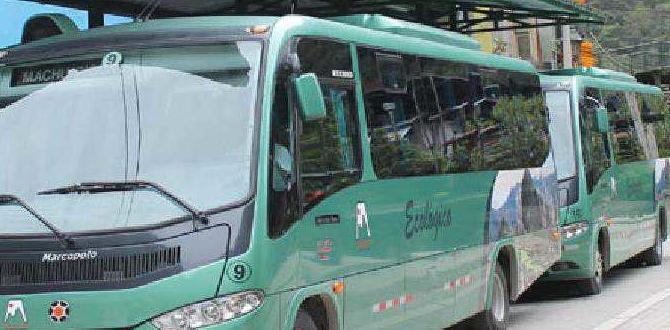Escape the crowds in the Atacama Desert with smart planning! Discover hidden gems, optimal timing, and insider tips for a serene adventure in one of the driest places on Earth, ensuring a peaceful and unforgettable experience far from the usual tourist trails.
The Atacama Desert is a traveler’s dream, a vast expanse of stark beauty and geological wonders. Yet, as its popularity grows, so do the crowds, especially in the most iconic spots. Imagine gazing at the milky way in true solitude or exploring moon-like landscapes without jostling for a view.
It’s entirely possible! With a little insider knowledge, you can craft an Atacama Desert no-crowds itinerary that prioritizes peace and genuine discovery. This guide will walk you through how to find those quiet corners and experience the magic of the Atacama without the hustle and bustle.
Why Seek an Atacama Desert No-Crowds Experience?
The allure of the Atacama is undeniable. Its otherworldly landscapes, from salt flats that stretch to the horizon to geothermal geysers that erupt at dawn, are truly breathtaking. However, the most accessible and well-known attractions can become quite busy, particularly during peak seasons.
This can detract from the serene, almost spiritual, feeling many seek in such a remote and powerful environment. By aiming for an “Atacama Desert no-crowds” experience, you unlock a deeper connection with the landscape, enjoy more authentic interactions, and capture truly unique photographs. It’s about savoring the silence, the vastness, and the raw beauty without the distraction of large groups.
When to Visit for Solitude (The Best Times for No-Crowds)
Timing is everything when it comes to avoiding crowds. While the Atacama is a desert and experiences relatively stable weather year-round, certain periods are significantly less busy.
Shoulder Seasons: Your Secret Weapon
The sweet spot for a less crowded Atacama experience lies in the shoulder seasons. These are the periods just before and just after the main tourist rushes.
April to May: Following the main summer crowds, this period offers pleasant weather and significantly fewer tourists. The autumn colors, though subtle in the desert, can add a unique hue to the landscapes.
September to October: Before the summer holidays kick in, these months provide warm days and cool nights, perfect for stargazing and exploring. You’ll find tours and accommodations less booked, allowing for more flexibility and a calmer atmosphere.
Avoiding Peak Times
To truly ensure an Atacama Desert no-crowds adventure, steer clear of:
December to February: This is the peak summer holiday season in South America, drawing the largest crowds.
July: This is the winter holiday period for many countries, also leading to busier trails and tours.
Major Chilean Holidays: Keep an eye on national holidays in Chile, as local travel also increases during these times.
Where to Stay for Tranquility
Your choice of basecamp can significantly impact your experience. While San Pedro de Atacama is the de facto hub, it can also be the busiest. Consider these alternatives for a more secluded stay.
San Pedro de Atacama: Strategic Stays
If San Pedro is your preferred starting point, choose accommodations slightly off the main tourist drag. Look for boutique hotels or guesthouses on the outskirts of town. This still gives you access to amenities and tour operators but offers more peace at the end of the day.
Alternative Towns and Lodges
For a truly off-the-beaten-path feel, explore lodging options in or near smaller towns, or consider remote desert lodges.
Toconao: A charming, smaller village south of San Pedro, offering a more authentic local feel. It’s a good base for exploring the southern parts of the Salar de Atacama.
Calama: While primarily an industrial city and airport hub, staying a night here before heading to San Pedro can sometimes mean beating the initial arrival rush. However, it lacks the desert charm.
Remote Desert Lodges: Several high-end lodges are situated far from any town, often with access to private reserves. These offer an immersive, luxury-infused no-crowds experience but come with a higher price tag. They are ideal for those prioritizing exclusivity and unparalleled access to nature.
Crafting Your Atacama Desert No-Crowds Itinerary
The key to an uncrowded adventure is thoughtful planning. This means prioritizing lesser-known sites, visiting popular spots at off-peak hours, and booking tours that focus on small groups.
Day 1: Arrival and Gentle Exploration
Morning: Arrive at Calama Airport (CJC). Instead of rushing straight to San Pedro, consider a leisurely breakfast or a quick stop at a local cafe in Calama.
Late Morning/Early Afternoon: Transfer to your accommodation. If staying in San Pedro, settle in and perhaps take a guided walk through the town to get your bearings, focusing on absorbing the atmosphere rather than rushing to see specific sights.
Late Afternoon: Visit the Pukará de Quitor ruins. Go just before sunset. It’s usually less crowded then, and the light on the adobe structures is beautiful. This ancient fortress offers a glimpse into the region’s pre-Hispanic history. You can rent a bike from San Pedro town to cycle there, enjoying the open space.
Evening: Enjoy a relaxed dinner in San Pedro. Opt for restaurants that are not directly on the main tourist street for a quieter experience.
Day 2: Salt Flats and Flamingos – Early Bird Gets the Worm
Sunrise: This is crucial for the Salar de Atacama, especially Laguna Chaxa. Most tours head out mid-morning. If you can arrange an early morning tour specifically for sunrise, you’ll have parts of the salt flat and the resident flamingos almost to yourself. The ethereal light of dawn over the vast white expanse is an unforgettable sight.
Late Morning: Visit the Miscanti and Miñiques lagoons. These high-altitude lagoons offer stunning blue waters set against volcanic backdrops. They are often part of the same tours as Laguna Chaxa, so the early start helps here too.
Afternoon: Explore the Piedras Rojas (Red Rocks) area. This is often a more remote stop on tours, meaning fewer visitors. The vibrant red rocks contrasting with the turquoise salt-lagoon make for spectacular photos.
Evening: Relax and enjoy the desert night. Consider a stargazing tour at an observatory outside of town for an experience that is inherently less crowded if you choose a reputable, smaller operator.
Day 3: Geysers and Valle de la Luna – Embrace the Dawn and Dusk
Pre-Dawn: This is the only way to experience the El Tatio Geysers without crowds. You need to depart San Pedro around 4-5 AM. Witnessing the steam plumes erupt against the dawn sky with minimal other visitors is pure magic. Remember to dress warmly; it’s freezing before sunrise at this altitude (4,320 meters).
Late Morning: After the geysers, many tours stop at the Puritama Hot Springs. While relaxing, these can get busy. Consider a visit to a less famous, more natural hot spring if accessible, or simply enjoy a peaceful lunch.
Late Afternoon/Sunset: Head to the Valle de la Luna (Moon Valley) and Valle de la Muerte (Death Valley) for sunset. Again, timing is critical. Most people arrive a bit later. Beat the rush by arriving an hour before sunset. Climb to the top of areas like the Duna Mayor in Valle de la Muerte for panoramic views. The shifting colors of the landscape as the sun dips below the horizon are spectacular and can be enjoyed in relative peace if you find a slightly more secluded vantage point.
Day 4: Off-the-Beaten-Path Adventures
Full Day: Dedicate a day to exploring sites that are naturally less visited.
Salar de Tara: This is a remote and stunning high-altitude plateau known for its incredible rock formations and salt lakes. It requires a full-day tour, often with a more specialized operator, and is significantly less visited than the more established routes due to its remoteness and the required permits. The journey itself is an adventure through raw desert landscapes.
Laguna Cejar & Ojos del Salar: While popular, if visited early morning or late afternoon, it can be more peaceful. The unique experience of floating in extremely salty water is remarkable.
Hiking in the Antofalla Salt Flat: If you’re looking for true solitude, arranging a guided hike or 4×4 excursion into the vast Antofalla Salt Flat (closer to Bolivia) can offer an unparalleled sense of isolation and discovery. This requires more dedicated planning.
Day 5: Departure
Enjoy a final, unhurried breakfast. Depending on your flight schedule, you might have time for some last-minute souvenir shopping or a visit to the San Pedro Church.
Transfer back to Calama Airport (CJC) for your departure, feeling refreshed and enriched by your serene Atacama experience.
Essential Gear for Comfort and Convenience
Traveling to an extreme environment like the Atacama, especially seeking solitude, requires thoughtful packing. Being prepared enhances comfort and allows you to fully appreciate the serene surroundings.
Clothing Essentials
Layers are King: Temperatures can swing dramatically from hot days to freezing nights. Pack lightweight, breathable tops, fleece or down jackets, and long pants.
Sun Protection: A wide-brimmed hat, sunglasses, and high SPF sunscreen are non-negotiable. The Atacama sun is intense.
Comfortable Footwear: Sturdy hiking boots or comfortable walking shoes are essential for uneven terrain.
Warm Accessories: A scarf, gloves, and a beanie are a must for early mornings and evenings, especially for geyser visits.
Comfort and Personal Care Items
For extended days of exploration and ensuring comfort throughout your journey, especially for those with specific needs, consider these:
Hydration: Reusable water bottles are a must. Staying hydrated combats altitude sickness and the dry desert air. You can often refill at hotels or restaurants.
Snacks: Pack energy bars, nuts, or dried fruit for easy access during long excursions.
Personal Comfort Aids: For travelers who require them, discreet and reliable adult diapers or child diapers can ensure peace of mind and freedom to explore without worry. Traveling to remote locations means readily available public restrooms might be scarce. Having comfortable personal care items allows focus on the breathtaking scenery, not potential discomfort. Look for options designed for maximum absorbency and discretion, like Depend adult diapers or Huggies Little Snugglers for children, ensuring comfort on dusty roads and long viewing periods.
Camera Gear: Don’t forget chargers and extra memory cards. The photo opportunities are endless.
Basic First-Aid Kit: Include pain relievers, antiseptic wipes, bandages, and any personal medications.
Navigating Atacama’s Unique Environment
The Atacama is an extreme environment, and understanding its quirks will make your trip smoother and more enjoyable.
Altitude Sickness (Soroche)
Many popular sites, like El Tatio Geysers and the high-altitude lagoons, are at elevations above 4,000 meters (13,000 feet).
Acclimatize: Spend your first day taking it easy. Avoid strenuous activity and alcohol.
Hydrate: Drink plenty of water.
Eat Lightly: Avoid heavy meals on your first day.
Chewing Coca Leaves or Drinking Coca Tea: This is a traditional remedy used in Andean regions and can help alleviate symptoms. Some pharmacies sell remedies.
Listen to Your Body: If you feel unwell, descend to a lower altitude if possible and rest.
Desert Conditions
Extreme Dryness: The air is incredibly dry. Use lip balm and moisturizer liberally.
Intense Sun: Even on cloudy days, UV rays are strong. Reapply sunscreen frequently.
Dust and Sand: A bandana or scarf can be useful for protecting your face from dust, especially on unpaved roads.
Sustainable Travel in the Atacama
Respecting the fragile desert ecosystem is crucial, especially when seeking a more secluded experience.
Stay on Marked Trails: Protect the delicate desert vegetation and geological formations.
Leave No Trace: Pack out everything you pack in. This includes all trash, wrappers, and even organic waste.
Conserve Water: Water is a precious resource in the desert. Be mindful of your usage.
Respect Wildlife: Observe animals from a distance and never feed them.
Choose Responsible Tour Operators: Look for companies that practice sustainable tourism and support local communities. Many excellent operators focus on small group tours, minimizing impact and maximizing the guest experience in a respectful way.
Table: Atacama Desert Weather Comparison (Approximate Averages)
| Month | Avg. High (°C) | Avg. Low (°C) | Avg. Rainfall (mm) | Notes |
| January | 28 | 10 | 0 | Hottest, potential for summer rains (Altiplanic Winter) |
| February | 27 | 10 | 0 | Still part of summer, can be humid |
| March | 26 | 9 | 0 | Beginning of quieter season |
| April | 25 | 7 | 0 | Excellent for fewer crowds, pleasant temperatures |
| May | 23 | 5 | 0 | Cooler evenings, fewer tourists, crisp air |
| June | 21 | 3 | 0 | Coldest nights, clear skies for stargazing |
| July | 20 | 2 | 0 | Winter holidays, can be busier, very cold nights |
| August | 21 | 3 | 0 | Transition month, still cool |
| September | 24 | 6 | 0 | Warming up, pleasant, before peak season returns |
| October | 26 | 8 | 0 | Very pleasant, good for solitude, blooming desert |
| November | 27 | 9 | 0 | Warming up, getting busier towards end of month |
| December | 28 | 10 | 0 | Start of summer high season, increasing crowds |
Note: Rainfall is extremely rare in the Atacama. These figures are approximate and based on San Pedro de Atacama.
Frequently Asked Questions
Q1: Is San Pedro de Atacama always crowded?
San Pedro de Atacama is the main tourist hub, so it can get busy, especially during peak seasons (December-February, July) and around holidays. However, by visiting during shoulder seasons (April-May, September-October) and strategically planning your tours, you can significantly reduce the number of people you encounter.
Q2: What are the best times of year to visit the Atacama to avoid crowds?
The shoulder seasons, from April to May and again from September to October, are generally the best times to visit if your priority is avoiding large crowds. The weather is pleasant during these periods, offering a great balance of comfortable temperatures and fewer tourists compared to the summer and winter holidays.
Q3: What kind of clothing should I pack for the Atacama Desert, especially for quiet exploration?
Packing in layers is crucial. Bring light, breathable clothing for warm days, a warmer fleece or jacket for cool evenings and early mornings (especially for geyser visits), long pants, a wide-brimmed hat, sunglasses, and sturdy walking shoes. For extra comfort on long days or if you experience temperature drops, a light scarf and gloves are recommended. Comfortable personal care items, like discreet adult diapers if needed, can also enhance overall comfort and freedom to explore undisturbed by potential discomfort.
Q4: Are there alternatives to San Pedro de Atacama for a quieter base?
Yes, for a more tranquil experience, consider staying in smaller towns like Toconao, which offers a more local feel. Alternatively, numerous remote desert lodges provide an exclusive, immersive experience away from any towns. These options are ideal for those seeking true solitude, though they might require more specialized planning and can be more expensive.
Q5: How can I ensure a less crowded experience at popular sites like El Tatio Geysers or Moon Valley?
The key is to visit these popular sites at off-peak hours. For El Tatio Geysers, this means going before dawn; most tours depart very early for sunrise, which is the quietest and most magical time. For Moon Valley, aim for sunset by arriving about an hour before the actual sunset to find a good spot and enjoy the changing light before the main crowds arrive. Early morning visits to Lagunas Miscanti and Miñiques, and Laguna Chaxa also yield better solitude.
Q6: Is altitude sickness a major concern in the Atacama, and how can I prepare?
Altitude sickness (soroche) can be a concern as many attractions are at high elevations (over 4,000 meters). To prepare, spend your first day acclimatizing by taking it easy, staying hydrated with plenty of water, avoiding alcohol, and eating light meals. Chewing coca leaves or drinking coca tea is a traditional remedy. Listen to your body, and if you feel unwell, rest or descend to a lower altitude.



